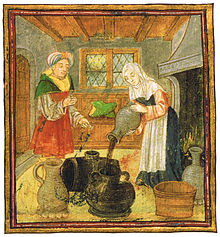Utilisateur:Mbzzn/Brouillon
- → N'hésitez pas à publier sur le brouillon un texte inachevé et à le modifier autant que vous le souhaitez.
- → Pour enregistrer vos modifications au brouillon, il est nécessaire de cliquer sur le bouton bleu : « Publier les modifications ». Il n'y a pas d'enregistrement automatique.
Si votre but est de publier un nouvel article, votre brouillon doit respecter les points suivants :
- Respectez le droit d'auteur en créant un texte spécialement pour Wikipédia en français (pas de copier-coller venu d'ailleurs).
- Indiquez les éléments démontrant la notoriété du sujet (aide).
- Liez chaque fait présenté à une source de qualité (quelles sources – comment les insérer).
- Utilisez un ton neutre, qui ne soit ni orienté ni publicitaire (aide).
- Veillez également à structurer votre article, de manière à ce qu'il soit conforme aux autres pages de l'encyclopédie (structurer – mettre en page).
- → Si ces points sont respectés, pour transformer votre brouillon en article, utilisez le bouton « publier le brouillon » en haut à droite. Votre brouillon sera alors transféré dans l'espace encyclopédique.

Boutehors
Boutehors /butor/ was a term pertaining to table practices during the Middle Ages. It refers to the last element of a meal, which was frequently served in another room. Before the Boutehors — came the serving. It was preceded by the services of the first plate, second plate, the pies, glazing of the desserts, pudding, and clearing of the table.
Composition[modifier | modifier le code]
Boutehors was used after the table had been cleared off and taken away. It was composed of wine and room spices (the name of which — came from the fact that they were savoured in a separate room) : These could be spices or candied fruit, with sugar or honey: ginger, coriander, fennel or candied aniseed, pine nut nougat, quince pastry, hazelnuts or sweetened pistachios.
Room spices were held to facilitate digestion: sugared almonds |and jams were considered medicine just as much as sweets. Candied spices were often prepared by apothecaries and brought to patients.
Status[modifier | modifier le code]
Boutehors was served after saying grace; It was therefore not an integral part of the meal. It was not compulsory, but rather viewed as an extra.
See also[modifier | modifier le code]
Notes[modifier | modifier le code]
- Danielle Jacquart, La Médecine médiévale dans le cadre parisien, XIVe-XVe siècles, Fayard, coll. « Penser la médecine », 1998, 587 p. (ISBN 2-213-59923-8).
References[modifier | modifier le code]
- (Fr.) Jean-Louis Flandrin, L'Ordre des mets, Paris, Odile Jacob, 2002, 278 p. (ISBN 2738110525).
- (Fr.) Bruno Laurioux, Manger au Moyen Âge, Hachette, coll. « Pluriel », 2002, 320 p. (ISBN 978-2818503638).
External links[modifier | modifier le code]
- "Boutehors" on the internet : http://www.oldcook.com/en/index.php
| 🍽 Food portal | 👑 The Middle Ages portal |
| Categories : | Gastronomy | Medieval culture |

